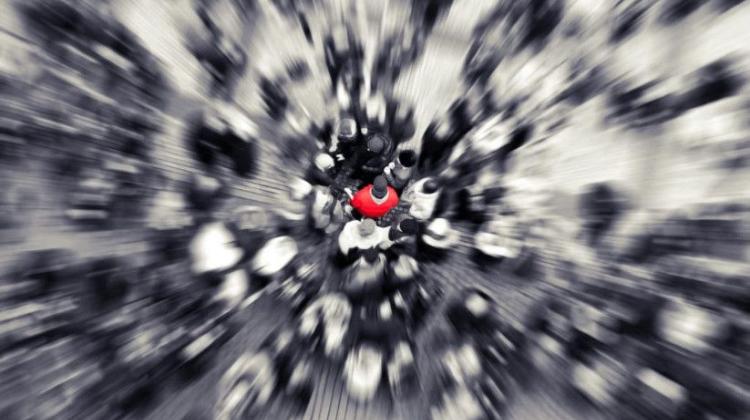Student invention will help you safely immerse in your phobia
 Photo: Fotolia
Photo: Fotolia
Fear of spiders, open space, flying? The system Phobos, developed at Białystok University of Technology will help in the treatment of these and many other phobias. 3D glasses will help get used to your phobia under the watchful eye of the therapist.
"Currently, the most commonly used treatment for phobias is the method called systematic desensitisation. It involves exposing the patient to an anxiety situation, which causes him to experience fear. The big problem, however, is to achieve an appropriate fear-inducing. It is hard to imagine a psychotherapist having exotic spiders in his office, access to the roof of a tall building, his own plane to treat people with fear of flying" - Maciej Kopczyński of Białystok Technical University noted in an interview with PAP.
Typically, such treatment is carried out in the imagination. The therapist tells the patient what to imagine, but he has no control over what the patient actually imagines. "We addressed this problem by proposing a virtual reality solution" - said Kopczyński.
Students from the Faculty of Computer Science, University of Bialystok, preparing for the international technology competition for students Imagine Cup 2014, developed an innovative system Phobos, which will support the work of therapists in the treatment of phobias.
One of the two components of the system is a helmet for displaying three-dimensional reality. "The work on such helmets started 20-30 years ago, but there were no appropriate technologies that would enable the creation of realistic graphics. Now - in virtual reality - we are surrounded by the world" - described Kopczyński.
These helmets are developed mainly for entertainment, and are used primarily in games. However, the possibilities of use are extensive. The helmet can be used for education, to simulate the behaviour in crisis situations, or for visualization of buildings. Polish students working on Phobos developed a graphics system that can generate any "phobia environment" in the virtual world, for example a roof of a tall building, aircraft interior or a small elevator.
"Displayed environment will depend on the requirements of the psychotherapist, and it will be tailored to the needs of the patient. We can create any imaginary world. Computer graphics does have any limits in reconstructing a situation" - Kopczyński emphasized.
Depending on the needs of the patient, 15-20 therapy sessions are usually carried out. Exposure to the situation of anxiety, using the system developed at Białystok University of Technology, takes only about five minutes. During that time, contact with the therapist is very important. Studies conducted in the United States showed that the effectiveness of the treatment carried out in this manner was much higher, and the treatment itself was shorter.
Students from Białystok University of Technology have only developed a prototype of the device, but they hope that the solution will be available to users at the latest in the fourth quarter of 2015. Helmets are the biggest obstacle, so far available only for developers. Their commercial premiere is planned for the last quarter of 2015. According to the manufacturer, their cost will not exceed $ 400.
In 2014 years, Phobos won in the category "Innovation" in the Imagine Cup competition. It also won a gold medal in the technological innovation category at Brussels Innova 2014, and the Inventeurs Europe France cup.
PAP - Science and Scholarship in Poland, Ewelina Krajczyńska
ekr/ agt/
tr. RL
Przed dodaniem komentarza prosimy o zapoznanie z Regulaminem forum serwisu Nauka w Polsce.

















